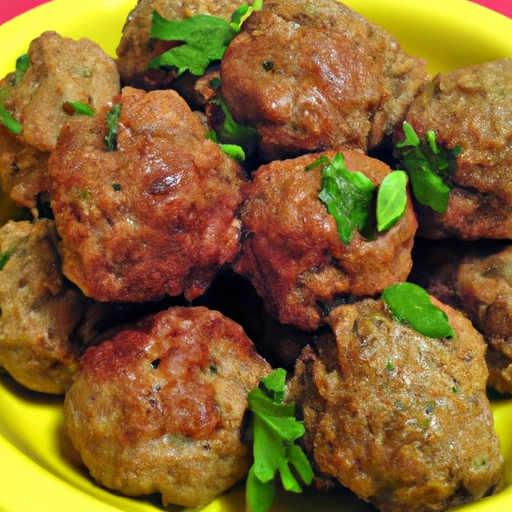Meatball
Description

Meatballs are a versatile and universally beloved food ingredient made from ground meat mixed with ingredients like breadcrumbs, eggs, herbs, and spices, then formed into small balls. They can be made from a variety of meats such as beef, pork, chicken, turkey, or a blend, allowing for diverse flavors and textures. Meatballs are often sized to cook evenly, typically ranging from 1 inch (2.54 cm) to 2 inches (5.08 cm) in diameter, with larger variations for specific dishes.
Common uses
Meatballs are commonly used in a variety of dishes, including spaghetti and meatballs, meatball subs, Swedish meatballs with lingonberry sauce, and in soups like Italian wedding soup. They can also be served as a main dish with gravy or sauce, as an appetizer with dipping sauces, or as a protein addition to salads.
Nutritional value
Calories
A typical serving of meatballs, which might consist of about four 2-inch (5.08 cm) diameter meatballs, contains approximately 260 calories.
Protein
That same serving usually provides around 14 grams of protein, making meatballs a hearty source of this essential macronutrient.
Fat
The fat content in meatballs can vary depending on the type of meat used, but a standard serving may have around 18 grams of fat.
Carbohydrates
Carbohydrates are generally low in meatballs unless fillers like breadcrumbs are used; a serving may have roughly 10 grams of carbohydrates.
Vitamins
Meatballs can be a source of vitamins such as B12 and B6, which are vital for the nervous system and energy metabolism.
Minerals
They also offer minerals like iron for blood health, zinc for the immune system, and selenium, an important antioxidant.
Health benefits
When consumed as part of a balanced diet, meatballs provide protein necessary for muscle growth and repair. The vitamins and minerals present contribute to various bodily functions and overall well-being.
Potential risks
Consuming meatballs made with high-fat meats or in large quantities can lead to excessive intake of saturated fats and calories, posing a risk for weight gain and cardiovascular issues. Certain prepared meatballs may also contain high levels of sodium, preservatives, and additives.
Common recipes
Meatballs are featured in recipes such as spaghetti and meatballs, Swedish meatballs, meatball stroganoff, meatball pizza, and meatball sandwiches.
Cooking methods
They can be pan-fried, baked, braised, or cooked in sauces, and slow cooking methods allow for rich flavor development.
Pairing with other ingredients
Meatballs pair well with tomato sauce, creamy sauces like Alfredo, tangy glazes, and various starches like pasta, rice, and potatoes.
Summary
Meatballs are a popular and flavorsome ingredient with a rich cultural history and presence in many traditional and modern dishes. They offer nutritional benefits when eaten in moderation and can be included in a variety of cooking methods and recipes, making them a beloved choice for cooks and diners around the world.